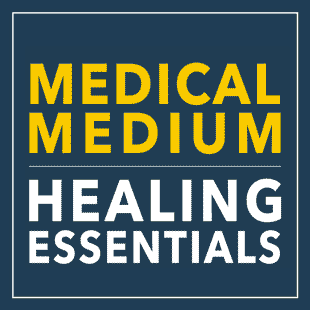Watch: Shingles Virus

Shingles Virus
Shingles is an illness that can produce fever, headaches, rashes, joint pain, muscle pain, neck pain, nerve pain, and other highly unpleasant symptoms. Typically, a shingles diagnosis is never made if no rash is present. In reality, however, the shingles virus is responsible for millions of people’s mystery symptoms, from unexplained rashes to neurological symptoms to migraines, and more.
The prevailing view of shingles is that a red rash or pustules always accompany it. However, this is merely the classic presentation of one type of the virus that causes shingles. There are actually 31 varieties of shingles viruses (15 of which are the most common), and they all cause different symptoms. Seven of the shingles strains do cause rashes, just not always in expected areas, while the other eight strains cause no rashes. So if you’re experiencing most of the symptoms of shingles but have no signs of it on your skin, it’s possible you have a non-rash shingles virus.
Shingles with rashes
There are seven strains of shingles that cause rashes. They’re primarily distinguished by the different types and locations of rashes they create. These include:
- classic shingles (rashes appearing anywhere from the chest to the feet)
- upper body (rashes appearing from the chest up but not on the arms)
- both arms
- one arm
- head (rash on the top and sides of the head)
- both legs
- vaginal shingles (appears outside but near the vagina, or inside the crotch area)
A misconception about shingles is that the virus resides directly under the rash, wherever it happens to be, but it actually lies much deeper, awaiting an opportunity to inflame your nervous system. In these strains, the virus releases a neurotoxin that travels to your peripheral nerves and skin. It is this neurotoxin that causes the rash and pustules for which shingles is so famous.
Shingles Without Rashes
There are eight strains of shingles that typically do not cause rashes. These include:
- Neuralgic shingles – attacks the lower extremities, with nerve pain in the legs or feet. Often misdiagnosed as diabetic neuropathy.
- Maddening itch shingles – involves a moving itch that can’t be scratched because the virus is irritating nerves too far beneath the skin.
- Vaginal shingles – goes into the inner vaginal walls and inflames the nerves there.
- Colitis shingles – causes severe inflammation in the inner lining of the colon.
- Arm and leg burning shingles – creates a hot, burning pain in your arms and legs.
- Mouth, TMJ, and Bell’s Palsy shingles – affects the gums and/or jaw area. It’s also responsible for Bell’s palsy (viral inflammation of facial nerves) and TMJ (a result of trigeminal nerve inflammation and pain).
- Frozen shoulder shingles - aggravates the nerves in the shoulder, causing it to freeze up for anywhere from a month to a year. Often misdiagnosed as infectious bursitis.
- Body on fire shingles - makes every part of your body feel like it’s on fire.
As with the rash-producing strains, the non-rashing strains also produce a neurotoxin. In this case, the neurotoxin travels inward to larger nerves. There is typically more internal pain and nerve injury than with the rash-causing strains. If you are diagnosed with shingles (despite the absence of a rash), your doctor may prescribe immunosuppressant medications to reduce the severity of the attack. Unfortunately, this can make the problem worse in the long run. You don’t want to suppress your immune system; you want to support it so it can fight the virus.
Rash or no rash, shingles can be excruciating. Fortunately, there are simple yet powerful remedies for beating this insidious virus and its many strains. How long this takes depends on how long the virus has been in your system, whether you’re in a healthy or a toxic environment, and the strength of your immune system. Practice basic self-care and support your immune system by eating well, exercising, and getting sufficient sleep.
Healing Foods
Certain foods can greatly aid the body in healing from shingles with and without rashes. The ideal foods to concentrate on are:
- wild blueberries
- coconuts
- papayas
- red-skinned apples
- pears
- artichokes
- bananas
- sweet potatoes
- spinach
- asparagus
- lettuce (leafy and deep green or red varieties)
- green beans
- avocados
These foods help because they contain powerful phytochemicals that can attack the different strains of the virus. This supports recovery from neurotoxin flare-ups, boosts the immune system, heals nerves, soothes inflamed skin, and helps detoxify the body.
The pain of shingles can make you feel like your life is going up in flames, but by generously incorporating these foods into your diet, you can douse the fire, and get back to living the vibrant life you are meant to have.
To learn more about how to address Shingles, check out Medical Medium: Secrets Behind Chronic and Mystery Illness and How to Finally Heal.
This item posted: 12-Feb-2016
The information provided on this Site is for general informational purposes only, to include blog postings and any linked material. The information is not intended to be a substitute for professional health or medical advice or treatment, nor should it be relied upon for the diagnosis, prevention, or treatment of any health consideration. Consult with a licensed health care practitioner before altering or discontinuing any medications, treatment or care, or starting any diet, exercise or supplementation program. Neither Anthony William nor Anthony William, Inc. (AWI) is a licensed medical doctor or other formally licensed health care practitioner or provider. The content of this blog and any linked material does not necessarily reflect the opinions of Anthony William, AWI or the principal author, and is not guaranteed to be correct, complete, or up to date.
Thanks for printing this post. For more, visit www.medicalmedium.com


